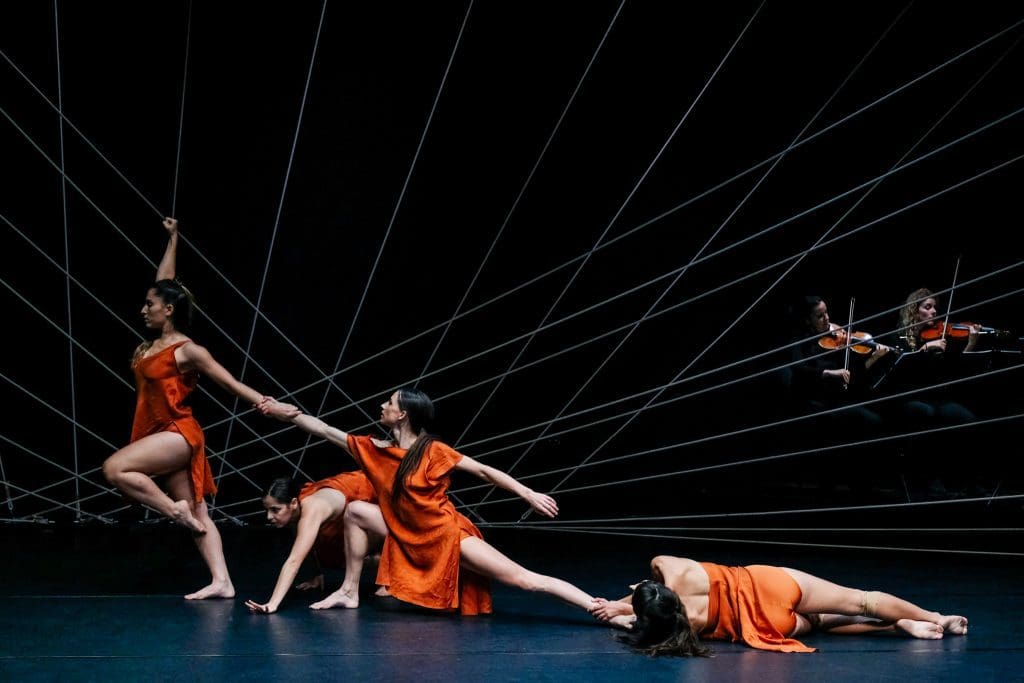צילום- אורי בורנשטיין
Inbal Oshman named her new creation Diagonal Sun (Semesh Alahsonit in Hebrew) vis a vis its title abroad- Shostakovich at Dusk. Both indicate an inner struggle between some central thematic components which influenced the way Oshman went about creating her artistic structure.
Oshman is very much part of the Israeli contemporary dance community yet, this particular work seems to make an effort to involve unexpected musical choices with very personal movement's manifestations, and echoes, perhaps unconsciously scents from different times.
The dance was accompanied live on stage by prestigious string quartet Carmel, which played Shostakovich's chamber music, number 8 and 10 for string quartets. Impressive set design by Zohar Shoaf, composed of diagonal lines of heavy ropes which crossed the entire back side of the stage like two sets of rays of light, that later played an important part in the actual choreography.
Shostakovich, one of the canonic composers of the 20th century, is a product of the Soviet culture and considered to be among the musicians that revolutionized, or modernized music.

The dancers Aya Deani, Jullie Moret, Dana Zeharia and Inbar Buchbinder were handpicked and formed a tight ensemble with fiery spirit when faced with challenging chorographical demands. Supported by the determined score, one could often see positions that matched the music' mood; fists were raised, knees bent with feet situated apart, accompanied by raised arms in defense/attack positions which formed still compositions found in public monuments of socialists regimes way back. In fact, this could be found here in visual art creations, such as works by painter/sculpture Gershon Knispel, and protest painter Ruth Schloss who were very active from the mid 20th century and onwards.
On a parallel level, this section portrayed its major theme, a call for objecting and resisting social bondage and searching ways for inner personal liberty.
In a similar way one could feel the expressive currents of Dmitri Shostakovich's music, so could the viewer witnessed similar emotions through the dancers' expressions. While the first act depicted complexity of contradictions, attractions and bonding- all that may be interpreted as social contacts and interactions among dancers and their courage to face forced restrictions. They concurrently see them as symbols of ties, bondage or restrain in the brutal sense of the word.
On the latter section the elegant display of sculptured rays were loosened and the many ropes served as props for the dancers who got entangled, bonded and tied them up, began to use them as means of support, enabling the dancer to lean back safely, and perform diagonal positions safely which could only be achieved by the aid of the tight ropes.
The intensity, fast rhythms and risk taking added much adrenalin to the captivating activities and ended that symbolic, often rituality to the female empowerment acts, adding zest to the cohesive artistic control and sharp, activist's merits.